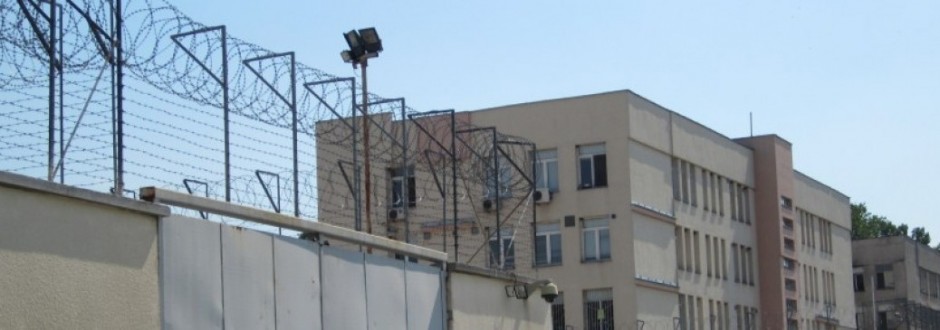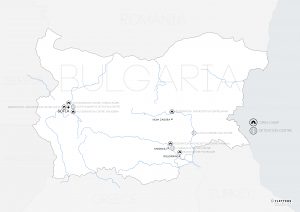1. Detainment
In 2015 the arrests at Bulgaria’s borders increased. About 10,000 migrants were arrested at the Bulgarian-Turkish border and more than 11,000 at the border to Serbia. According to the Bulgarian Helsinki Committee (BHC), in 2015 “9,530 persons applied for asylum in detention facilities of the Migration Directorate“, operated by the Ministry of Interior (MoI). Already in November 2015, the authorities had detained more than 27,000 “illegal migrants“ (-> for more information on detention, see 4. Bulgaria’s Refugee and Detention Centers)
2. Deportation
In 2016, the BHC registered an increasing number of violent push-backs in 2016. In these cases, people were brought back to the neighboring countries of Bulgaria, without being allowed of asking for asylum. According to new statistics provided through the European Council on Refugees and Exiles (ECRE), 624 people were transferred to Bulgaria under under the Dublin regulation. In the whole year of 2016, 16 people were transferred from Bulgaria to other countries, while Bulgaria received 10,377 requests regarding taking asylum seekers back. Finally, 624 people in total were deported back to Bulgaria from other countries (like e.g. from Germany 105, from Austria 148 and 99 from Hungary) during 2016.
3. Asylum Application and status
A total of 5815 asylum-seekers entered in Bulgaria in the period January-September 2013, the statistic illustrates an increase of granted refugee statuses in the following years: In 2014, according to the State Agency for Refugees (SAR), 11,081 people claimed asylum in Bulgaria – in the following year, 20,391 people asking for asylum. The UNHCR announced in December 2015, that „nearly 30,000 refugees“ reached Bulgaria in 2015. In 2016, the SAR listed 19,418 asylum requests but obviously lesser people obtained a refugee status. Until the end of January 2017, the SAR recorded 421 asylum applications.
Year |
Applications submitted |
Refugee status granted |
Subsidiary status granted |
2013 |
7144 |
183 |
2279 |
2014 |
11081 |
5162 |
1838 |
2015 |
20391 |
4708 |
889 |
2016 |
19418 |
764 |
587 |
2017 |
3700 |
900 |
804 |
Source: State Agency for Refugees (May 2018)
Since 2016 the SAR is guaranteeing on an average less status to applications, which were being submitted. In 2017, less refugees were registered by the agency. Furthermore, in the same year, the label “humanitarian status“ was changed to “subsidiary protection status“
4. Bulgaria’s Refugee and Detention Centers
In Bulgaria there are currently three detention centers operating, which are located in Busmantsi and Lyubimets. Lyubimets (with 300 places) and Busmantsi (with 400 Places) are functioning as well as deportation centers. The average term of imprisonment in 2015 in Lyubimets was 18 (in the year 2012 it was 31) and in Busmantsi 21,6 days (in the year 2012 it was 61)1. For the detention centers the MoI is responsible. In February 2017, the current number of people who were living in “closed-type“ centers was 984.
Additionally, since 1st January 2016, during the period of assessment of their application asylum seekers can be placed in closed reception facilities under the jurisdiction of the State Agency for Refugees (SAR). In the year of 2016, 400 people had to stay in “Asylum Detention“ for reasons of “protection of national security or public order“. At present, the only official closed facility managed by SAR is located within the detention center in Busmantsi and has a capacity of 60 people.
All in all there are currently six (open) refugee centers for refugees operating in Bulgaria. Three of them are in Sofia and three are located in the rest of the country. In February 2016 the capacity of the open camps was 5130 places: Banja (70), Pastrogor (320), Ovcha Kupel (860), Vrazhdebna (370), Voenna Rampa (800), Harmanli (2710). Since the end of the year 2016, two reception centers in Harmanli, managed by the SAR, were existing as closed type centers. For the reception centers (closed and open type), the SAR is responsible. At the end of 2016, 400 Afghans were detained in closed reception facilities of the SAR. The BHC confirmed that they were later sent to open centers and one SAR reception center of closed type was shut down.
1 For detailed information read as well the report “Who gets detained? Increasing the transparency and accountability of Bulgaria’s detention practices of asylum seekers and migrants”, which was written by the Center for Legal Aid – Voice in Bulgaria (CLA) in 2016.
Map by 7Letters Collective
5. Numbers of individual border crossings
It is difficult to say how many people are crossing the land border(s) of Bulgaria day by day. The UNCHR Serbia is counting the weekly entries from Bulgaria to Serbia: From the 18th-24th September 2017 a number of 147 people crossed. From the 25th of September until the 1st of October 2017 a number of 188 people crossed. Additionally, the UNHCR came out with a report in August 2017 which added together the numbers of interceptions at the Turkish-Greek and the Turkish-Bulgarian land borders from January-August 2017 and mentioned a quantity of 17,067 people. Only in August 2017 a number of 464 was intercepted at the Bulgarian-Turkish border by Turkish land forces. In December 2017, Turkish authorities stated that in 2017 they have prevented 20,014 people from entering Bulgaria and Greece via the Turkish land border by using force.

